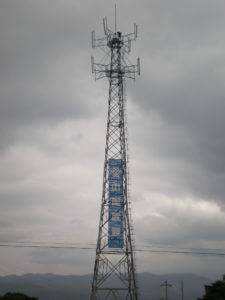 Many companies find themselves with the need to continuously expand their cell phone services to accommodate the ever-increasing connectivity demands. In areas where network congestion is a problem, understanding which types of towers in telecom are right for business is important and can result in better signals and reception.
Many companies find themselves with the need to continuously expand their cell phone services to accommodate the ever-increasing connectivity demands. In areas where network congestion is a problem, understanding which types of towers in telecom are right for business is important and can result in better signals and reception.
Tower Demands
RCRwireless News recently posted an articles about Powering Cell Towers: Improving efficiency, reliability, and scalability in tower power systems, they note: “Global climate change is driving the evolution of renewable green energy, new government regulations, and more effective disaster preparedness. And let’s not forget Internet of Things (IoT). IoT can only scale up to the massive scale required if cheap, reliable power is available on demand. In networks, much like real estate, the key is location, location, location. When planning for new network capacity, whether retrofits, acquisitions, or greenfield builds, location of cell towers is absolutely essential.”
Location and types of towers go hand-in-hand.
Different Types of Towers in Telecom
There are two main types of towers for supporting antennas for mobile communication antenna: self-support towers and guyed masts.
Self-Supporting Towers
Self-supporting towers offer the most possibilities compared to other types of telecom towers and are considered appropriate for nearly all wireless communication applications. These towers are freestanding structures and are available in different designs such as the 3-legged triangular and 4-legged square lattice-type structures. Their designs are ideal for cellular towers, wireless internet towers, broadcast towers, radio towers, and more.
Guyed Masts
Guyed towers are some of the most economical telecom towers. They can often be seen as slender steel structures and generally don’t require a huge foundation which can save a business on costs. Commonly seen in the tower industry, guyed towers are designed to provide maximum strength, efficiency and versatility with easy installation. They are optimized and preferred for cellular sites, supported by guy wires and designed with the ability to carry light to heavy antenna loads.
Tower Designs
It’s important to take into consideration a few factors when choosing which telecom tower will best suit your project such as design, tower height, location, environment and weight. In our recent post, “Different Types of Telecom Towers: Which Design is Right for Your Site?,” we detailed out the differences between lattice towers, guyed towers, monopole towers, camouflage towers, self-support towers and mobile cell towers.
KMB Tower Crews
KMB is a leading provider of Design & Build tower modifications and reinforcement services. We combine expert structural engineering services with our fabrication and construction services to maximize the structural capacity of our clients’ vertical real-estate.
As a member of NATE; we take pride in the professional level of service our tower crews provide across the nation. Our experienced team of Construction Managers and Tower Foreman provide hands on management to our crews across the nation working out of regional office locations in New York, Boston, Chicago, San Francisco, Dallas and St. Louis.